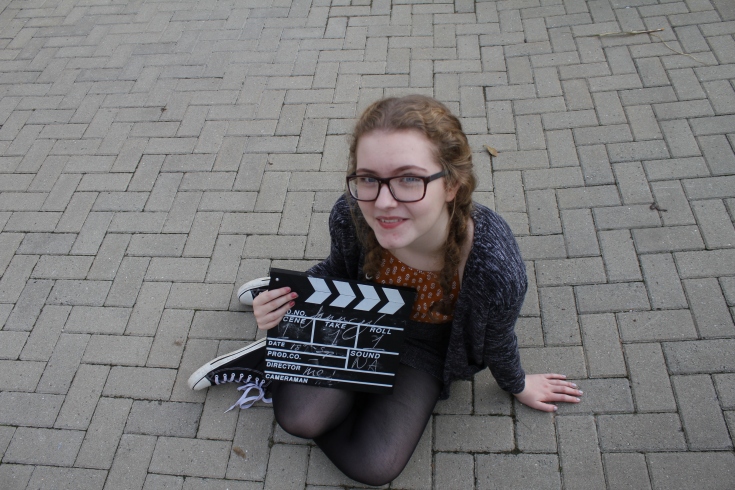In my research project I aim to find out which films are best known for their use of camera work and which techniques they use in order to make the use of camera work so effective.
Primary research plan:
- Take photos and videos trying out different camera techniques commonly used in films.
- Watch films known for their camera work
Secondary research plan:
- Research and analyse specific scenes which show camera work well
- Research and expand knowledge on camera work techniques
Primary Research
Over The Shoulder Shot
An OTS shot is where the camera is positioned behind one subject’s shoulder, usually during a conversation. This is usually used during conversations and helps to imply a connection between the speakers as opposed a the single shot which may suggest distance.

Extreme Close Up Shot

Low Angle Shots
This shot will be the camera looking up at a character or subject, often making them look bigger in the frame and It can make the characters look wither heroic or show dominance.

Dutch Angle Shot
This shot is where the camera is tilted on its side to create a somewhat skewed angle and a creates a distorted perspective suggesting something about the scene is off.

High Angle Shot
This shot is used when the camera is looking down on a character or subject and can isolate them in the frame or make them look inferior in a scene or weak.

Panning Shot
A panning shot is where the camera moves continuously right to left or left to right horizontally, usually to show a background or follow a character. This usually creates the idea that the character is just passing by and the camera shows a fixed point of view as shown in the video I have filmed below.
Secondary Research
I decided to watch and analyse some films that are known for their use of camera work and pick my favourite scenes to talk about. In order to analyse these effectively I did some research on what techniques and shot types are commonly used in films and tried to look out for these techniques when analysing the films.
I have researched some techniques used in film that can help to create great camera work which include:
- POV shots
- Tracking shots
- Panning shots
- High / low angle shots
- Close ups
- Birds eye view
- Dutch angle
- Shot reverse shot
- Long shot
- Crane shot
‘Pulp FIction (1994) Best scene’ Giakoumakis. V (2012)
Pulp Fiction (1994)
This scene from Pulp Fiction shows amazing camera work through the use of different camera techniques. A low angle shot is used to make Samuel’s character look superior to the man sitting down. This low angle shot is also made effective through the victim being sat on the chair while the man with the gun is standing up, again helping to show his dominance. In the same way a high angle is then used when showing the man on the chair to make him look inferior to the character Jules and emphasises the fact that he is scared and helpless. A close up shot is also used in this scene to portray the character’s anger clearly to the audience and prepare us for the shooting that is about to occur. A wide angle shot is used throughout the scene cleverly to make sure all the characters are in shot. This includes the man standing in the background who looks unimportant , however later on in the film we find out more about him so by using a wide shot it subtly shows the audience his significance.
‘The Shining – steadishot by Garret Brown’ Mulina.I (2008)
The Shining (1980)
This is probably one of the most famous tracking shots used in film. The camera tracks and follows the young boy up a hallway which looks mysterious. Through slowly following the boy through this camera technique it not only builds tension but puts us into the POV of the boy and we as the audience start to feel the tension he is feeling. The over the shoulder / Dutch angle that is used when the boy looks up to the door again gives the impression that something is not right and something bad could be about to happen. Through us looking over his shoulder it makes us feel as if we are there and the camera acts as another perspective for the audience. A medium close up shot allows the camera to stay at the same height as the boy, therefore allowing us to see what he sees when he is turning the door knob. When he encounters the twin girls at the end of the corridor a close up shot is used so we can clearly see the shock on the boys face. This is then followed by a behind / follow shot allowing us to see both the boy and the twin girls which makes the audience feel as if they are also in the hallway.
Referencing
‘The best cinematography of 2015’ The Playlist Staff (2015) http://www.indiewire.com/2015/12/the-best-cinematography-of-2015-97877/ – Last Accessed 19/10/16
‘Film Studeies 101’ Freel. I (2011) http://www.empireonline.com/movies/features/film-studies-101-camera-shots-styles/ – Last Accessed 19/10/16
‘Birdman scene 4’ Theodorus . Y (2015) https://youtu.be/LLyqFFR9kPE – Last Accessed 19/10/16
‘The Shining – steadishot by Garret Brown’ Mulina.I (2008) https://youtu.be/cy7ztJ3NUMI – Last Accessed 19/10/16
‘Pulp FIction (1994) Best scene’ Giakoumakis. V (2012) https://www.youtube.com/watch?v=xcWPNFcG0ts&feature=youtu.be – Last Accessed 19/10/16
Leave a comment